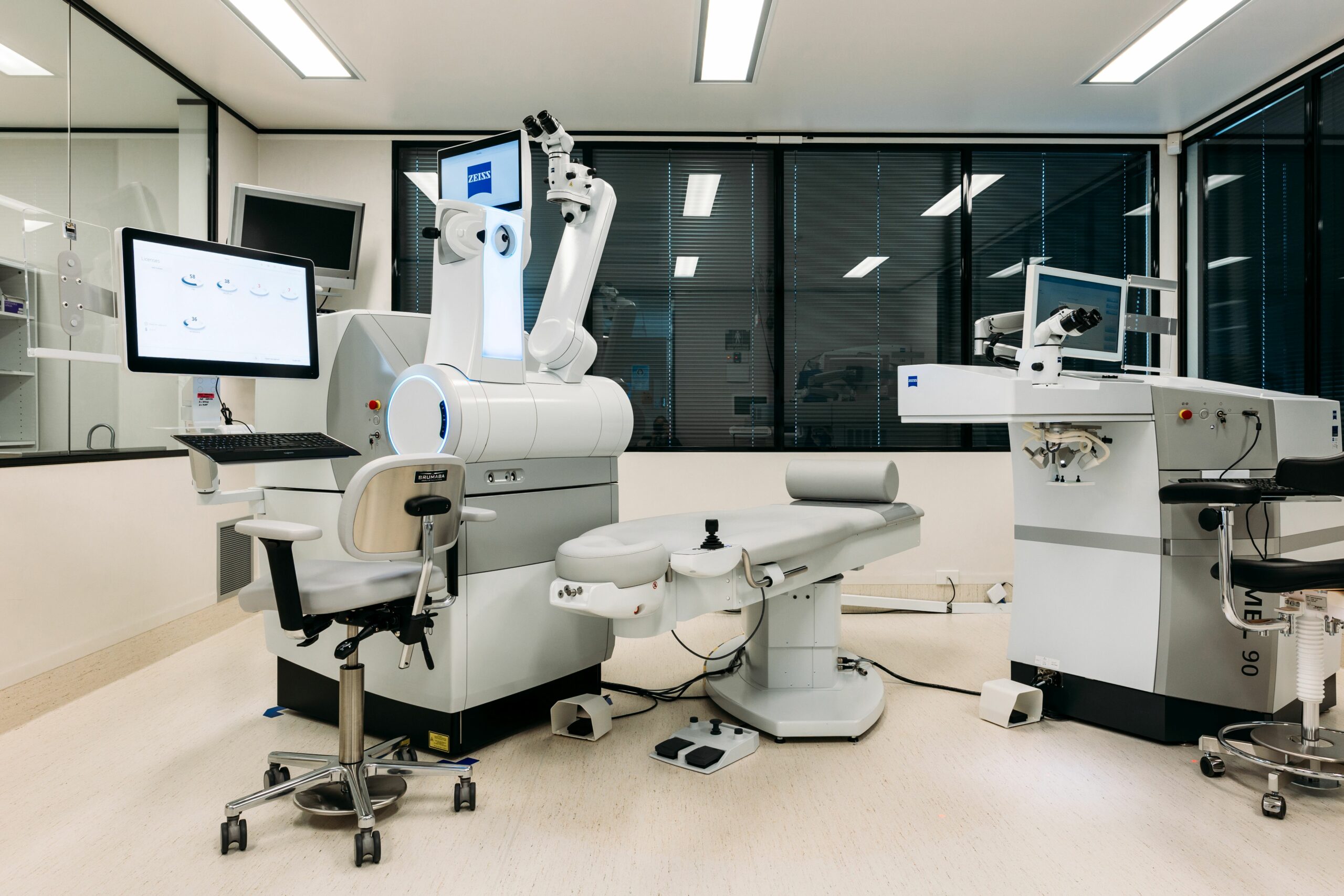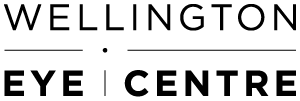Wellington Eye Centre’s Ophthalmologist
Laser eye surgery is a convenient and effective option for vision correction, but is it too expensive? How does it weigh up against contact lenses and glasses? Contact lenses and glasses are an ongoing cost, whereas laser eye surgery is a higher upfront cost. In this article, we will delve into the different options available, see how they compare and which is more cost-effective in the long run.

What are the ongoing costs of glasses?
One option available on the market today to correct your vision is glasses, which is often the first form of vision correction for most as well. As a result, the daily reality of wearing glasses has been something they have learned to tolerate over time.
Glasses are a simple and easy way to correct vision, but are they really cheaper than laser eye surgery?
Different prescriptions
A pair of basic glasses may only cost you a couple of hundred dollars. However, often the vision issues we are trying to correct are not simple and the price quickly rises. For example, you may need astigmatism correction, or your script may be quite strong. The cost of your glasses then can quickly ramp up to higher than the thousand dollar mark, even more so if you want to have thinner lenses.
As you age your glasses prescription and needs can change. This can mean multiple pairs of glasses for different tasks, which is a hassle. The alternative is having special lenses such as progressives, or ones that transition in the sunlight. Both of these make wearing glasses a little bit more convenient, but not without the extra cost!
You may want multiple pairs so you can have a pair at work and home, so you don’t have to worry about forgetting them! Or it may be so you can match them with your outfits. The downside of both of these factors? More money spent!
Glasses as an investment
Glasses are an expensive investment (depending on the level at which you need them) and it is highly likely that you will need to invest in them on a regular basis. This could be due to a number of factors – the frames inevitably breaking, lenses getting scratched, or they get left on the bus (we have all been there).

The convenience factor
Glasses can simply be annoying in many situations.
Exercise is a situation where contact lenses or laser eye surgery are a better option, as glasses quickly become inconvenient. You could get away with wearing glasses for some leisurely forms of exercise such as walking, however, glasses are not well suited to intense exercise or movement.
They fog up when it is steamy, get wet in the rain, and can slip off when you’re exercising. Making them virtually unusable for certain tasks. Some people even find that by the end of the day their glasses can feel so heavy on their face that they cause headaches.
Ultimately this shows that glasses can actually be an expensive investment. You could end up spending thousands of dollars in the long term, only to potentially lose them, break them, or need to update your prescription regularly. So, is there a better option?
What are the ongoing costs for contact lenses?
Contact lenses can be perceived as being a convenient alternative to glasses. They come in different shapes and sizes, and enable people to achieve the freedom of clear vision without needing to wear glasses. They don’t steam up, they are harder to leave on the bus, but how do they weigh in cost-wise?
Bespoke for your eyes
It is difficult to determine the cost of wearing contact lenses, as it largely depends on what your eyes require. They also come in many varieties, with different replacement schedules; ranging from monthlies to daily disposables.
Due to having to frequently replace contact lenses and cleaning solutions the costs can add up. If you start wearing contact lenses when you’re young, a lifetime of use can reach well into the thousands of dollars. All while still having to administer them yourself. Over a number of years, that adds up to a lot of time in your daily routine.
Typically, you will also need to get regular check-ups and eye exams with your optometrist if you opt for contact lenses. There are more intricacies involved with contact lenses and assessing whether or not they are suitable for your eyes and lifestyle. These extra check-ups will further increase the amount you need to spend over a period of time.

The downside of contact lenses
So what do you get for your money? Exercising in them is easier than in glasses and you can wear them out and about when it’s raining, but what about the downsides?
Apart from the cost, contact lenses can take a toll on your eyes. It is easy to forget to take them out before you fall asleep, or to forget to clean them as often as they need; both of which leave your eyes at risk of getting an infection, which could permanently damage your eyes.
While a lot of exercises are fine to do with contact lenses in, swimming is a definite no. Wearing contact lenses in the water, chlorinated or not, can result in eye irritation and infections, especially if swimming goggles are not worn and proper after-care is not undertaken.
There is also an environmental cost to contact lenses in that they are very difficult to dispose of in an environmentally friendly manner. There are some options for recycling them but these are few and far between. Disposing of contact lenses via a waterway, such as flushing them down the toilet can be detrimental to marine life and the environment. Due to their small size, they easily make their way into waterways and can be eaten. Research has been tied to this plastic then making it onto our plates when we consume seafood. Waterways aside, regularly replacing contact lenses is not the best for the environment. The packaging and disposal of contact lenses add to our growing waste problem. From an environmental perspective, glasses or laser eye surgery would be a more environmentally-friendly option. Keep this in mind the next time you are ordering a top-up of your contact lenses.
What’s the cost of laser eye surgery?
While laser eye surgery has a higher upfront cost, when compared to glasses or contact lenses, you may find it significantly cheaper in the long run. Depending on your prescription laser eye surgery can be very cost-effective.
Cost aside, one of the main benefits of laser eye surgery is not needing to endure the hardships of contact lenses or glasses. No more having to buy new frames every other year, no need to worry about leaving your glasses on the bus, and no worrying about how to clean your contact lenses during a week-long camping trip. You will forget you ever tolerated the routine of glasses or contact lenses.
Laser eye surgery has the ability to help with short sight and long sight, presbyopia, and correct astigmatism. So depending on your age and prescription – it’s worth getting a suitability assessment to find out if it is an option for you.
What types of laser surgery exist?
There are three types of laser eye surgery currently available in the market. The best choice for you will depend on a number of factors, including:
- What your current prescription is
- How thick your corneas are
- Your lifestyle and activities
- What your personal preference is
Your eye surgeon will determine the right procedure for your lifestyle during your medical assessment. Check out the table below for a snapshot of two of the three types of laser refractive surgery we offer:
Comparing SMILE® vs LASIK laser eye surgery:
| SMILE | LASIK | |
| Visual Results | Great | Great |
| Flap-related complications | Non-existent | Very infrequent |
| Suitability for thinner corneas | Less | Less |
| Time to complete healing | 7 Days | Months |
| Speed of visual recovery* | 24 to 48 hours | 24 to 48 hours |
| Eye irritation/pain | Minimal | Minimal |
How much does laser eye surgery cost?
At the Wellington Eye Centre, we have an all-inclusive fee of $3,380 per eye, which is applied across all three procedures we offer. The cost of your medical assessment will be deducted from this fee. Given laser eye surgery is generally elective, as a rule, insurance companies will not cover this type of treatment.
Laser eye surgery payment plans
The higher upfront cost can become more manageable when you look at our 12 months interest free finance option, which we offer through GEM Visa and Q Card. Have a look at our handy surgery payback calculator to see how soon you can start saving money.
To find out more about laser eye surgery and whether it is a potential option for you, contact the clinic for a no obligation, free, initial laser suitability assessment today. If you’d like to check your likelihood of being suitable first then take this quick suitability quiz. You can also check out some of our other blogs here:
- The Truth Behind Common Laser Eye Surgery Myths
- Recovery After Laser Eye Surgery
- Laser Eye Surgery for Sports
- Meet Dr Andrew Logan: New Zealand’s First LASIK Eye Surgeon
SMILE® is a registered trademark of Carl Zeiss Meditec.

What to Expect on The Day of Surgery

What happens when your vision after laser vision correction surgery is not what you expected?

Am I too old to have laser eye surgery?

Dr Andrew Logans Innovation Achievements

Laser Eye Surgery for Sports

Meet The Team at the Wellington Eye Centre

Festive Season and Your Eyes

Naumi Studio Hotel Wellington

What to Expect on The Day of Surgery

